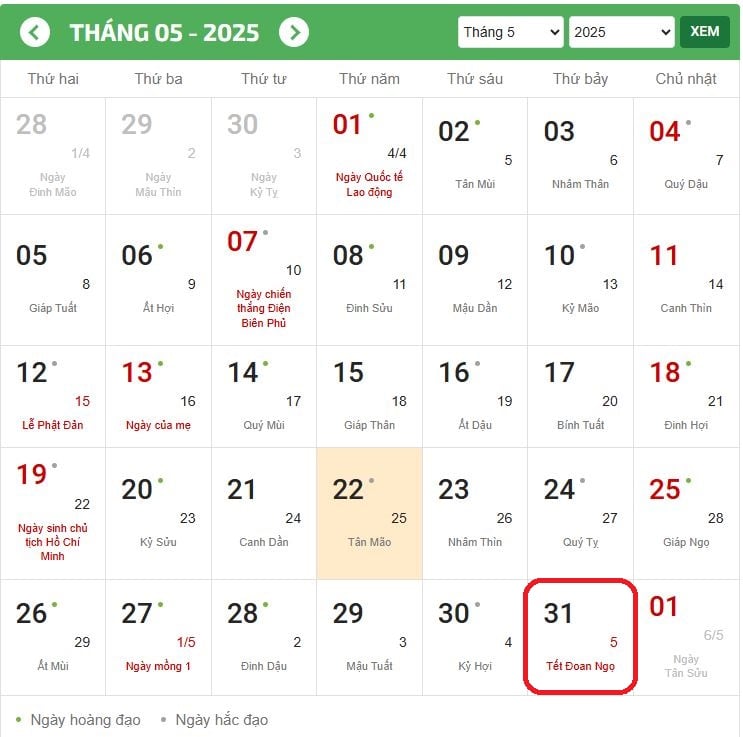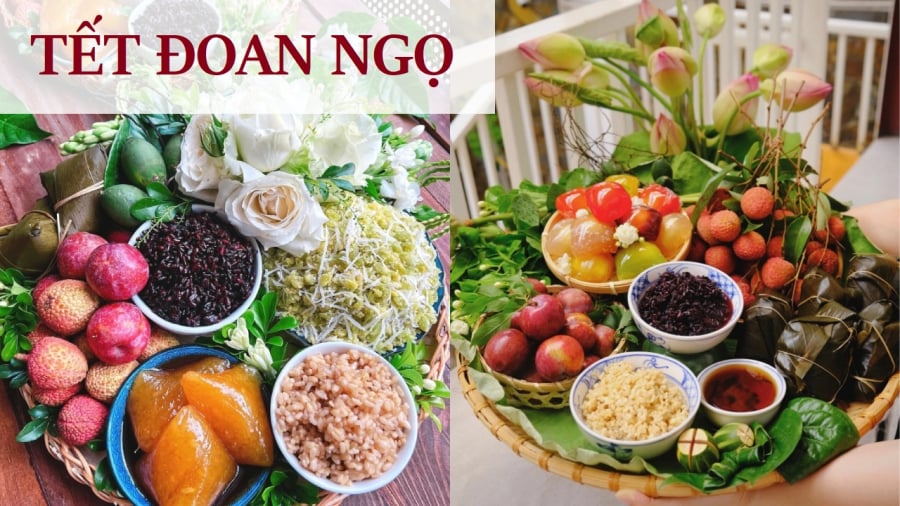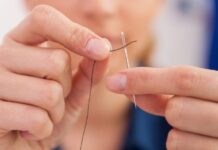Tết Đoan Ngọ, also known as Tết Đoan Dương, falls on the 5th of May every year according to the lunar calendar. It is one of the most important traditional festivals for Eastern Asians, especially in Vietnam and China. The Vietnamese often refer to this day as Tết Diệt Sâu Bọ, or Insect-Killing Festival.
When is Tết Đoan Ngọ 2025, and what is the date in the solar calendar?
Etymologically, the word “Đoan” in Đoan Ngọ signifies the beginning, while “Ngọ” represents the noon timeframe (from 11 am to 1 pm). Hence, Đoan Ngọ refers to the beginning of noon. Alternatively, if we consider the term “Đoan Dương,” the word “Dương” implies the sun and yang energy. Thus, Đoan Dương indicates a time when yang energy prevails.
For the Vietnamese, Tết Đoan Ngọ is an opportunity to safeguard their health, prevent diseases, and protect crops from the onslaught of pests and diseases. Consequently, our ancestors referred to this day as Tết Diệt Sâu Bọ. Accordingly, on the 5th of May of the lunar calendar, people perform rituals to worship deities and ancestors, praying for good health and a bountiful harvest. Notably, our forefathers also worshiped Đôi Truân, who was regarded as the guardian deity of crops, offering protection against pests and diseases.
According to Professor Trần Đức Cường, quoted in Tiền Phong newspaper, Vietnam’s hot climate, especially during the 5th lunar month, provides favorable conditions for insects, bacteria, and viruses to thrive. These pests damage crops and adversely affect human health. Therefore, our ancestors devised strategies to combat the heat and prevent diseases through specific foods and drinks.
Tết Đoan Ngọ in 2025 falls on Saturday, the 31st of May, in the solar calendar. As this date lands on a weekend, families have more convenient time to perform the ceremonial rituals, and family members can gather to enjoy the traditional atmosphere of this festival.

Customs and Traditions of Tết Đoan Ngọ
Our ancestors attached great importance to Tết Đoan Ngọ. They would prepare a feast with various dishes to offer to the deities and ancestors. The specific offerings might vary depending on the region and local specialties.
According to the book Hà Nội địa dư, our forefathers had a custom of “bundling mugwort leaves, dyeing fingernails, and tying threads around the wrists” during Tết Đoan Dương. Meanwhile, the book Đồng Khánh địa dư chí mentions the following offerings for this festival: “On Tết Đoan Ngọ, prepare wine and fruits to worship ancestors early in the morning. Everyone drinks wine and eats fruits, which is believed to kill insects…”.
In the past, people believed that insects could reside within the human body. Usually, these creatures hid in the stomach, but on the 5th of May in the lunar calendar, they would emerge. Therefore, it was thought that consuming specific foods could help eliminate these pests.

The eradication of insects needed to be performed early in the morning, right after waking up. Hence, the custom of consuming glutinous rice wine, rice crackers, mung bean porridge, and tro cakes early in the morning of the 5th of May emerged. These foods were believed to intoxicate the insects. Afterward, people would eat various sour and bitter fruits to destroy the pests.
During Tết Đoan Ngọ, our ancestors also hung bundles of mugwort leaves at the door to ward off evil spirits and prevent illnesses.
On this day, people also practiced other customs such as bathing with fragrant herbal water, tree burning, and dyeing their fingernails and toenails…
While some of these traditions are no longer widely practiced, many families still maintain the custom of offering traditional foods such as sticky rice, tro cakes, and seasonal fruits during Tết Đoan Ngọ.































